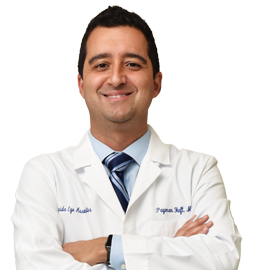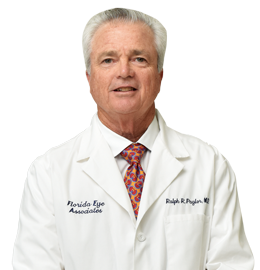by Tracy Ravin, MD
Cataracts are a leading cause of curable blindness worldwide. In the , no one should go blind from cataracts with proper care of an ophthalmologist. Formation of a cataract is a normal aging process of the lens inside the eye. The lens is the part of the eye that helps focus light rays on the retina (the back layer of the eye). Early in life, the lens is transparent and lets the light pass through; with time the lens becomes cloudy and then is called a cataract. When the cataract gets cloudy enough to interfere with a persons’ vision, cataract surgery should be considered. This article will address common questions people have about cataracts.
What Causes Cataracts?
In most cases, the answer is age. Cataracts form slowly and cause no pain. Rarely, babies can be born with a cloudy lens called a congenital cataract. Some things that speed the development of cataracts include: long-term use of corticosteroids, alcoholism, diabetes mellitus, eye injury, smoking, and long-time exposure to ultra-violet (UV) light.
How Will I Know If I Have a Cataract?
Many people have cataracts without knowing it. This is because in the early stages the cataract does not interfere with vision. As the lens gets thicker, it has more power within the eye which can actually improve reading vision, sometimes called “second sight.” With time, the lens becomes cloudier and may cause a gradual blurring of vision. This is often noticed as a difficulty reading road signs when driving. Night driving can also be affected. Haloes around lights are often seen. Sensitivity to bright light or decreased vision in bright light are common complaints. Ability to distinguish or perceive colors may be impaired.
How Are Cataracts Treated?
For early stage cataract, changing glasses prescription may improve vision. There are no medications or eye-drops that will help. When cataracts are interfering with normal activities of daily living, surgery should be considered.
Florida Eye Associates’ surgeons usually remove cataracts under local anesthesia in our ambulatory surgery center. The surgeon makes a tiny incision and the clouded lens is removed through “phacoemulsification,” a process that uses ultrasound power to liquefy the lens so it can be withdrawn. A clear lens implant is then placed in the sac that used to hold the cataract.
The power of the lens implant is adjusted according to measurements taken before surgery. With the proper lens implant, sometimes the need for glasses can be eliminated. A common misconception that lasers are used in cataract surgery is not true, although laser treatment may be done at some point after cataract surgery. Cataract surgery is covered by insurance and Medicare.
How Long Is Recovery from Surgery?
Patients go home the same day after cataract surgery. Most patients have no pain, only a scratchy or sandy feeling in the eye. Most people return to their normal activities within a day or two after surgery. Eye drops are used after surgery and avoiding heavy lifting or rubbing of the operated eye are recommended. Other instructions depend on the physician’s preferences.
Can Cataracts Come Back?
No. Once removed, cataracts cannot grow back. Sometimes a film can grow behind the lens implant and cause cloudy vision to return. This membrane can be removed with a laser and does not grow back.
Tracy Ravin, MD is a comprehensive ophthalmologist with Florida Eye Associates. She is accepting new patients at her offices in Melbourne and Cocoa Beach and can be reached at 321-392-4322.


















